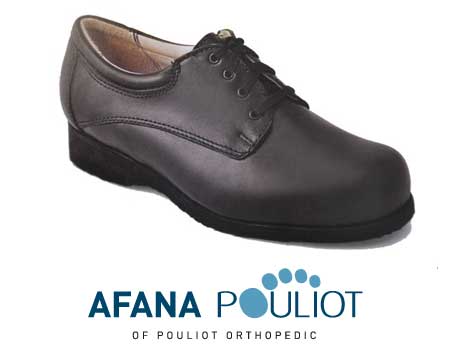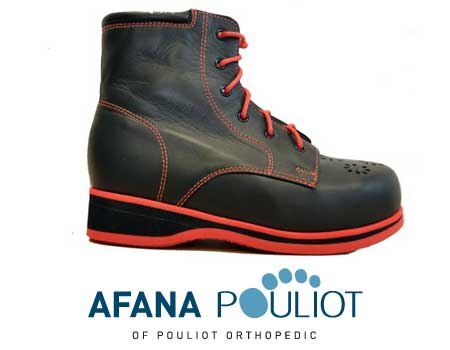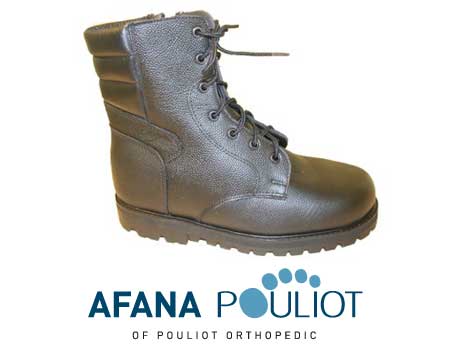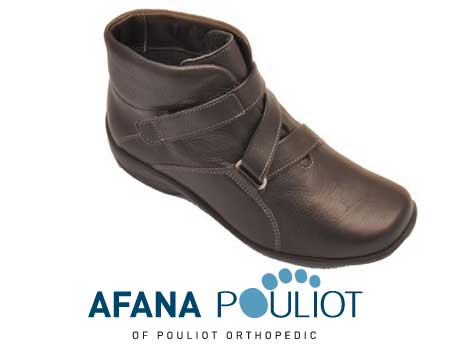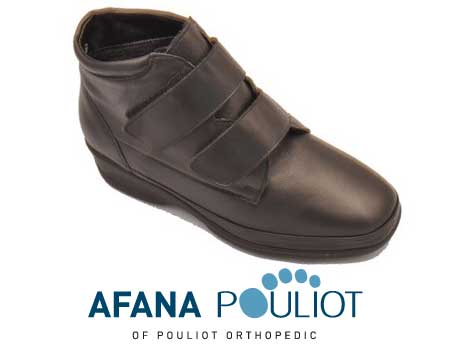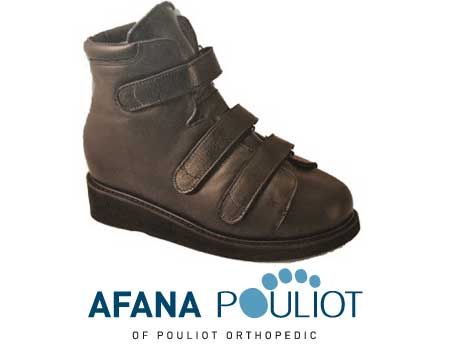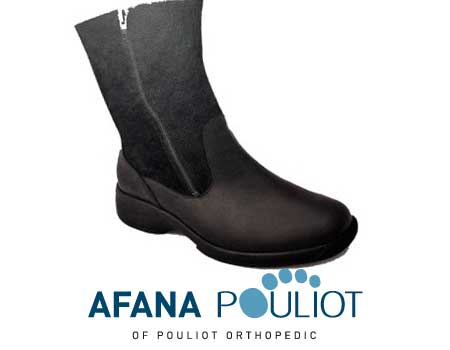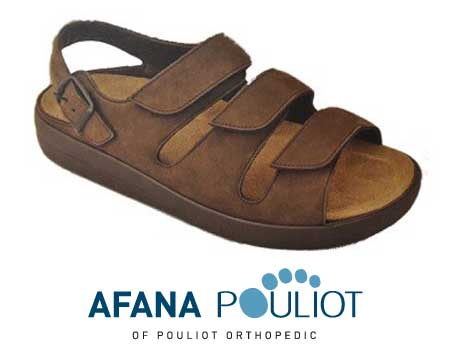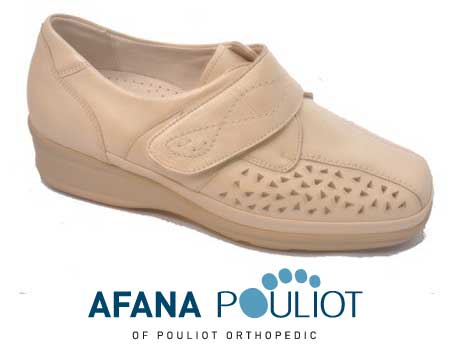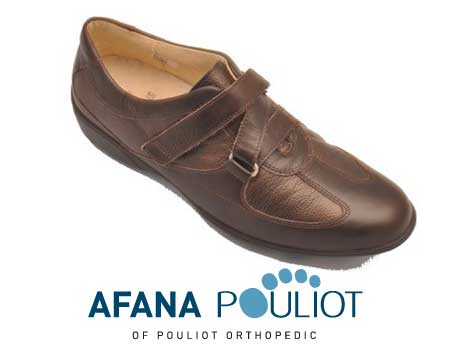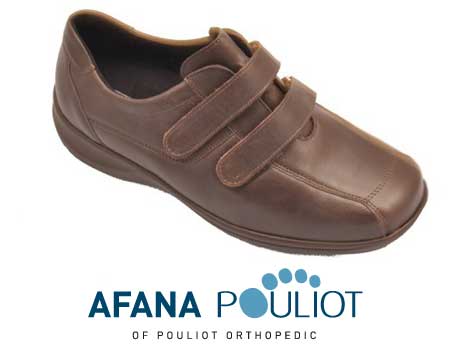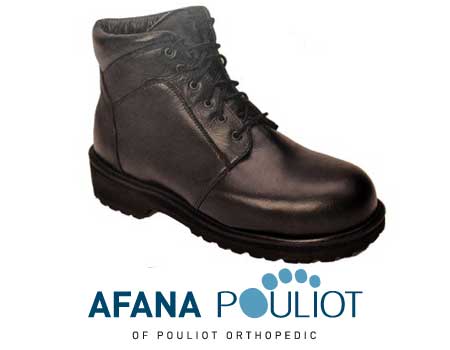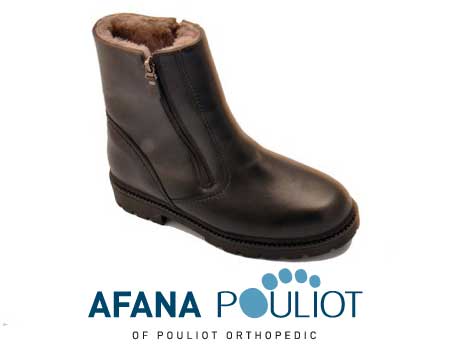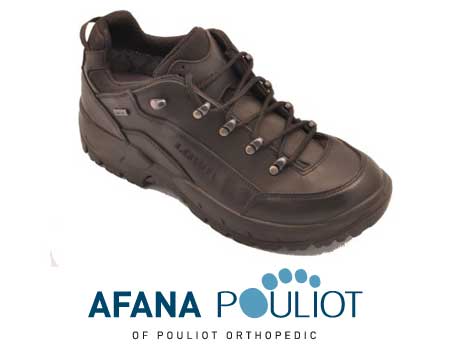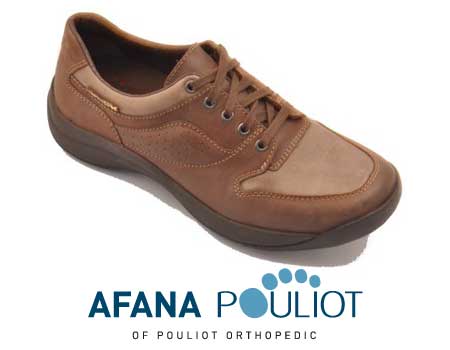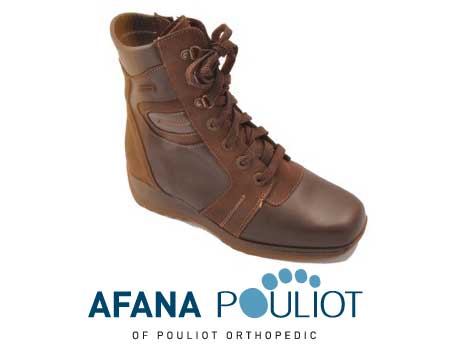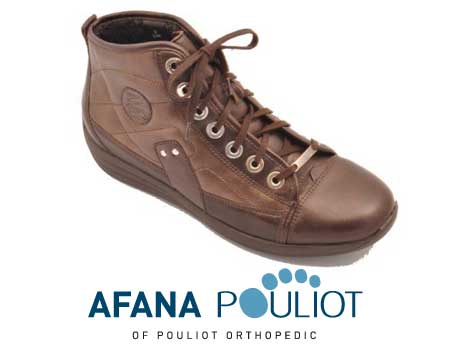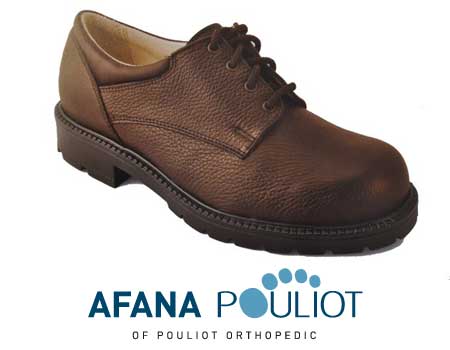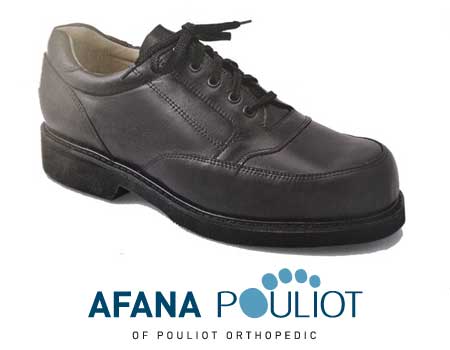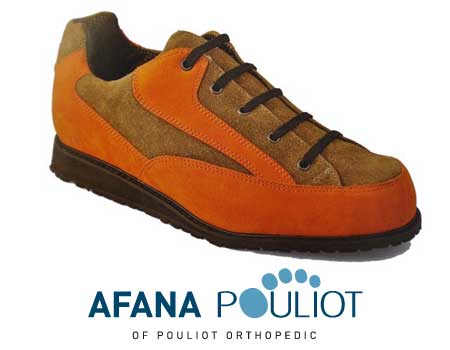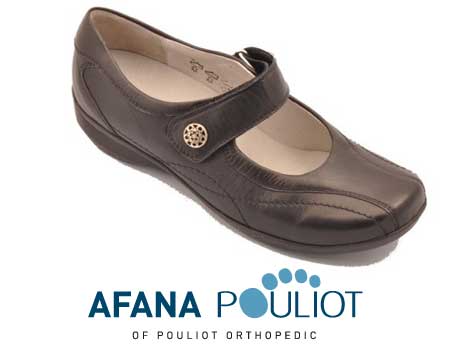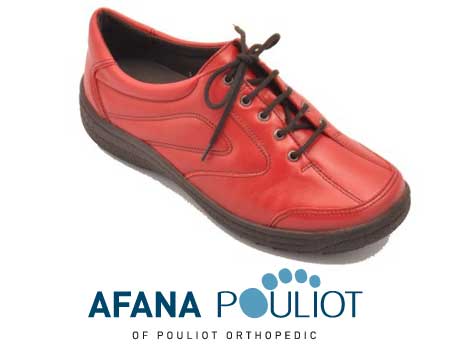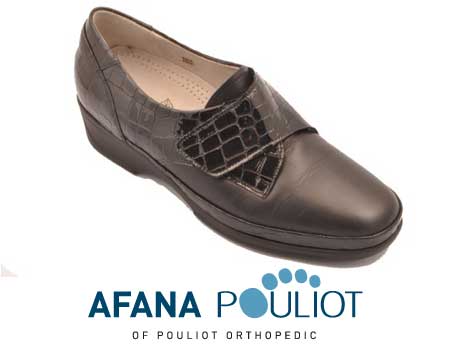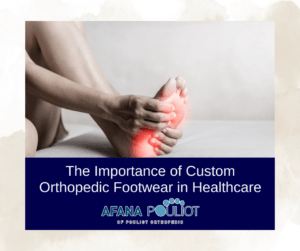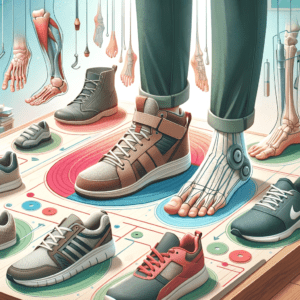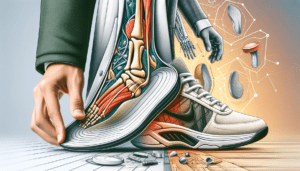Good foot health is often taken for granted until one develops a problem. Flat feet, bunions, and plantar fasciitis are common complaints that notably cause considerable discomfort, limited mobility, and a general restriction in one’s chosen lifestyle. Fortunately, orthopedic footwear offers some advantages regarding the treatment and possible prevention of these types of common foot problems. In this post, we will look at some benefits of wearing orthopedic footwear and how it can help keep your feet healthy and pain-free.
Understanding Common Foot Problems
Flat Feet
Flat foot, also known as fallen arch, is a condition whereby there is no natural arch in the foot; when standing, all of the sole touches the ground. Because of this, the arch is not present, and the foot, therefore, does not support the body and is a shock absorber very well, hence giving rise to many physical complications.
Causes of Flat Feet
There are many various reasons why this happens. Still, genetics is the most dominant factor in having flat feet- most people develop flat feet from one or both parents. Usually, the arch in children develops at the age of six years, but in some, this arch never develops, and they end up with flat feet their whole lives. Injuries involving the foot or ankle may be slight. Still, they can weaken the arch over a long time, where ligament tears or fractures occur. Acquiring the condition later in life could be due to some medical conditions such as arthritis, diabetes, and posterior tibial tendon dysfunction. It is also true that obesity enhances the stress imposed on the foot and, therefore, can quickly flatten the arch, particularly when a person has excess weight for an extended period.
Symptoms of Flat Feet
Although most people with flat feet never notice anything wrong, others may suffer from pain or fatigue after long periods of standing or walking. Alignment can also be affected; problems such as overpronation include the extreme inward rolling of the foot, which might cause knee or hip pain. Swelling and stiffness prevail because the tendons supporting the arch are overworked, leading to strain and inflammation.
Treatment Options
Though treatment is not always required, several options exist to relieve the discomforting symptoms of the affected. Supporting shoes with proper arch support can minimize the strain on the feet. At the same time, custom orthotic inserts can give additional alignment and pain-relieving support. Physical therapy strengthens the surrounding muscles to aid stability further, while weight management can alleviate the pressure off the arches. These are options that work well, especially in the case of patients with severe symptoms. In rare cases, physicians may advise surgery to treat problems in the foot’s structure; this often brings more long-lasting relief.
Living with Flat Feet
Effectively managing flat feet can go a long way in improving comfort and mobility, especially when integrated with other supportive care practices. In addition to flat feet, a number of other common structural issues affect the health and comfort of the foot. These include bunions. A bunion involving the joint right at the very base of the big toe comes with different challenges and requires a different approach toward its care. In the next section, let’s learn about bunions and the development process.
Bunions
Hallux valgus is a medically termed bony growth at the base joint of the big toe. The big toe bends inward toward the other toes, causing its joint to protrude outward. This causes a visible bump on the side of the foot, which may increase over time, changing the overall shape of the foot. Yet, they differ in severity: the advanced ones are painful and inflamed and may limit the usefoot’s function.
Causes of Bunions
Various conditions, including genetics and ill-fitting shoes, often cause these issues by adding stress to the foot. Many develop due to genetics, and one with bony prominences in their family may show tendencies toward them due to specific inherited types of foot shape, flat feet, or low arches. The footwear also plays a massive role in this: the high heels or shoes with narrow, pointed bottoms also force the toes into unnatural positions and put additional pressure on the big toe to shift inwards. Certain activities or occupations that repeatedly stress the feet, such as prolonged standing and walking, can further accelerate the formation of bunions.
Symptoms of Bunions
Bunions naturally keep growing, often producing irritating pain, especially when someone walks or wears shoes that press on the area. The symptoms generally include:
- Pain and Tenderness: The bunion site can become sore and inflamed and is prone to increasing pain upon any physical activity, even when standing for long periods.
- Swelling and Redness: This irritation and inflammation may also cause the area around the bunion to swell, become red, and sometimes even warm to the touch.
- Restricted Movement: Over time, the big toe joint may lose mobility, making it quite difficult to bend the toe and impinge upon overall foot flexibility.
- Corns and Calluses: Friction from the big toe pressing against the second toe can create corns or calluses, further adding to the discomfort.
Treatment Options
Though bunions may not all require treatment, several effective options exist for those who experience discomfort or difficulty with mobility. The first significant pressure reliever from the bunion is a well-fitted shoe offering a larger toe box. These shoes lessen pain and can slow further development of the bunion. Orthotic inserts can also be helpful by providing full support to the alignment of the foot. Over-the-counter medications, ice packs, and anti-inflammatory treatments can help reduce inflammation and relieve pain. Exercises in physical therapy to strengthen the surrounding muscles of the foot may improve flexibility and give stability to the joint. Doctors recommend surgery when conservative approaches are not practical in severe cases. Surgery for bunions, or bunionectomy, involves realigning the bones and tendons of the big toe back to its normal position and alignment.
Living with Bunions
Because most people experience some discomfort from bunions, it is important to treat symptoms with supportive shoes and care. By paying extra attention to foot care, many people with bunions can continue to be active, thus minimizing further complications. Other structural foot problems include hammertoe and plantar fasciitis.
Proper management of bunions can greatly increase foot comfort and help prevent further complications. However, of the common foot problems, bunions seem to be the most debilitating regarding weight-bearing mobility and daily functioning. Plantar fasciitis, a common condition that inflames the connective tissue band along the bottom of the foot, often leads to heel pain. The following section covers its causes, symptoms, and treatment methods.
Plantar Fasciitis
Plantar fasciitis is the inflammation of the plantar fascia- a thick, fibrous band of connective tissue that originates from the medial calcaneal tubercle and terminates in the skin of the forefoot. Providing a bowstring-like structure, it supports the foot’s arch with every step. Tensions or inflammation of the plantar fascia may make it the source of extraordinary pain, usually about the heel. It may affect any age group but happens more often to runners, people staying on their feet for a very long time, and people of a particular type of foot type, like flat feet or high arch.
Causes of Plantar Fasciitis
Most often, plantar fasciitis results from repetitive load applied to the plantar fascia, which causes minor ruptures in the tissue. Over time, these tiny tears create inflammation and pain. There are several possible contributing factors to plantar fasciitis:
- Overuse: High-impact activities include running, dancing, and standing for long periods; such activities increase stress on the plantar fascia and raise the risk of an injury.
- Inadequate Footwear: Shoes with less support, cushioning, or arch stability raise tension on the plantar fascia. The common culprits are high heels, flats, and worn-out shoes.
- Increased Pressure on the Feet: Conditions like obesity, pregnancy, or sudden weight gain increase the load applied to the plantar fascia, hence inflammatory. Jobs that require prolonged standing or walking on hard surfaces also increase the risk.
Symptoms of Plantar Fasciitis
The main symptom of plantar fasciitis is sharp, stabbing pain in the heel, which is usually very painful with the first steps in the morning or after rest. The initial pain is due to sudden stretching of the inflamed plantar fascia. As the day progresses, the pain may subside, only to worsen after standing for an extended period or following physical activity. Some people also experience calf muscle tightness or arch pain, which often intensifies after activity.
Treatment Options
Although challenging to cure, several plantar fasciitis treatments efficiently reduce pain and hasten the healing process. Rest and Activity Modification: Reducing high-impact activities or the rest of the feet from stress can allow the plantar fascia to heal. Stretching and Strengthening Exercises: Regular stretching of the calf muscles, Achilles tendon, and plantar fascia improves flexibility and reduces tension on the plantar fascia, thus helping to relieve pain. Strengthening can also help stabilize and align the foot. Footwear
Adjustments: Special supportive shoes with solid arch support and cushioning can increase symptoms. The addition of an orthotic insert should occur now, further cementing the foot arch and reducing impact forces. Try ice, anti-inflammatory medications, and massaging the affected area to relieve pain and inflammation to reduce swelling and discomfort. For chronic or intense pain, doctors recommend physiotherapy treatments or corticosteroid injections.
Because plantar fasciitis is closely related to wearing poorly supportive shoes, proper selection can make all the difference in prevention and treatment. Properly fitted shoes minimize stress on the plantar fascia, promote overall foot health, and prevent other common foot problems. We continue by discussing why supportive footwear is important and how to find the best choices for foot comfort and function.
Key Benefits of Orthopedic Footwear for Foot Health
Shoes are very essential to health since they offer support and protection to our feet every day. Badly chosen or ill-fitting shoes may be used to exacerbate existing foot conditions or hasten their development. Poorly supporting, cushioned, or aligned shoes cause strain on the arches, toes, and heels, increasing pressure and stress. The narrower toe boxes can make bunions worse by forcing toes into unnatural positions, while a lack of arch support stresses flat feet. Without heel cushioning or plantar fascia support, shoes can cause plantar fasciitis to occur because each step increases inflammation and pressure on this very sensitive tissue.
The first step toward healthy feet is acknowledging that different and better footwear is required. Choosing shoes according to the distinctive shape of one’s foot and support requirements can make a big difference in helping prevent conditions from arising or deteriorating further. Include cushioned insoles, proper arch support, and ample toe room to ensure that footwear aligns cooperates with the natural design of the foot, enhancing comfort and supporting overall foot health.
The features of orthopedic shoes were designed to attend to specific conditions of the feet, thus allowing for relief and support in a focused manner. Designers establish orthopedic shoes to aid in health care for one’s feet in customized support, comfort, and flexibility. The following section has pinpointed specific feature inclusions that make this orthopedic footwear and the advantages it promotes in helping to improve a range of foot conditions.
Top Features and Benefits of Orthopedic Footwear
Orthopedic shoes focus on foot health, incorporating features that address common conditions to provide maximum comfort and care. It has a unique feature not found in regular shoes: a wider toe box provides the natural spreading of your toes without developing any friction or pressure; hence, it is ideal for people with bunions. Other critical features include arch support, ensuring that the foot maintains its natural alignment and relieves the arch area of excessive tension, which is highly important for people with flat feet. On the other hand, orthopedic shoes offer additional cushioning to distribute the weight of the foot evenly, reducing impacts on sensitive areas like the heel and forefoot. Made of flexible and breathable materials, they allow comfortable fitting, supporting the foot’s movements while providing ventilation.
Afana Pouliot Custom-Made Orthopedic Footwear takes it a step further by making shoes based on the structure of an individual’s foot. An exact fit, Afana Pouliot custom shoes will give specific support bunion pressure, arch support, or custom orthotics to accommodate and soothe the plantar fasciitis. This personalization in design further assures more comfort and effectiveness in maintaining foot health.
Orthopedic Footwear Benefits for Common Foot Conditions
Orthopedic shoes play a vital role in allowing people with specific conditions of the foot targeted relief and support. People with flat feet will benefit from an orthopedic shoe’s enriched arch support, decreasing their pain while walking by distributing the pressure evenly across the foot. The soles of the boots absorb shock through their cushioning. They prevent fatigue and further injury of sensitive areas. Individuals with bunions find the wider toe boxes of orthopedic shoes minimize friction on the big toe joint, thus easing discomfort and potentially slowing the bunion progression. For people with plantar fasciitis, the additional heel cushioning and firm arch support of an orthopedic shoe can reduce the strain on the plantar fascia, relieving pain and inflammation over time.
Afana Pouliot Custom-Made Orthopaedic Footwear treats these illnesses with personalized treatment, custom-fitting each shoe for maximum relief and optimum alignment. For example, Afana Pouliot’s custom designs for plantar fascia include very advanced cushioning that considerably lowers the tension in the heel and arch without inhibiting natural foot movements. Thus, considering the particularities of a person’s foot structure, these customized shoes offer support and comfort, which no other shoe could offer.
How to Choose the Best Orthopedic Footwear
Selecting the proper orthopedic footwear involves understanding your specific foot needs and taking steps to ensure a perfect fit. It’s essential to consider your unique foot condition—flat feet, bunions, or plantar fasciitis—and choose shoes designed with features that address these issues. Getting professionally measured is also important, as foot size and shape can change over time due to aging or weight fluctuations. Consulting with a podiatrist or orthopedic specialist can further aid in selecting footwear that meets medical recommendations for foot health.
Afana Pouliot’s approach simplifies this process by tailoring each pair of shoes to match the individual’s individual and health needs. This custom fit provides better comfort and ensures the boots align with the foot’s structure to prevent further complications and support long-term foot health. With Afana Pouliot Custom-Made Orthopedic Footwear, each pair of shoes accommodates an individual’s unique needs, increasing their lifespan and boosting their effectiveness in promoting foot well-being.
Long-Term Benefits of Quality Orthopedic Footwear
Choosing the proper orthopedic footwear, especially with custom-made options like those offered by Afana Pouliot, can significantly improve comfort and mobility for individuals with foot issues. With the appropriate support, cushioning, and fit, orthopedic shoes make daily activities more comfortable and reduce the risk of aggravating foot conditions. Proper footwear is one of the most effective investments in foot health, enhancing quality of life and helping individuals stay active. In the following section, we’ll look at traditional lifestyle and wellness practices that can further support foot health and complement the benefits of orthopedic footwear.
Orthopedic Footwear Benefits for Enhanced Foot Health
More than a choice for comfort, investing in orthopedic footwear is actually an investment in long-term health, mobility, and quality of life. Thus, by choosing the right shoes that answer certain needs and provide support for one’s foot, an individual can learn to cope with or even avoid the discomfort and complications related to flat feet, bunions, and plantar fasciitis.
Afana Pouliot Custom-Made Orthopedic Footwear continues this commitment to healthy feet by using custom solutions to the particular needs of each wearer; this is to further your range of motion and continued activity and lessen your potential for re-occurrences regarding all concerns surrounding the feet. By paying attention to supportive, well-fitting footwear, you will take the best course of action toward keeping your feet healthy and resilient over many years.
Experience Lasting Comfort and Foot Health with Orthopedic Footwear Benefits
If you’re experiencing foot pain or discomfort, consider exploring orthopedic footwear options. Consult with a specialist to find the best fit for your needs and take a step towards healthier, happier feet.
Orthopedic Footwear Benefits: FAQs
- Can orthopedic shoes be stylish? Absolutely! Many brands now offer orthopedic shoes in various fashionable designs.
- How often should I replace my orthopedic shoes? Experts recommend replacing them every 6 to 12 months, depending on wear and tear.
- Are custom orthotics necessary? Only for some, but they can provide additional support and comfort for specific conditions.
- Do orthopedic shoes help with all foot conditions? While they can’t cure ailments, they significantly aid in managing pain, discomfort, and alignment issues caused by many foot problems.
- Can children wear orthopedic shoes? Yes, orthopedic shoes benefit children with flat feet, gait abnormalities, or other foot issues, promoting healthy foot development.
- Is there a difference between orthopedic shoes and regular supportive shoes? Yes, orthopedic shoes are designed with therapeutic features to address foot, ankle, and lower limb problems, offering more targeted support than regular supportive shoes.
- Can I wear orthopedic shoes for sports? Orthopedic shoes and inserts are designed for athletic activities, providing the necessary support while being suitable for various sports.
- How do I know if I need orthopedic shoes? Consider orthopedic footwear if you experience persistent foot pain, have a diagnosed foot condition, or notice significant wear in certain areas of your regular shoes.


